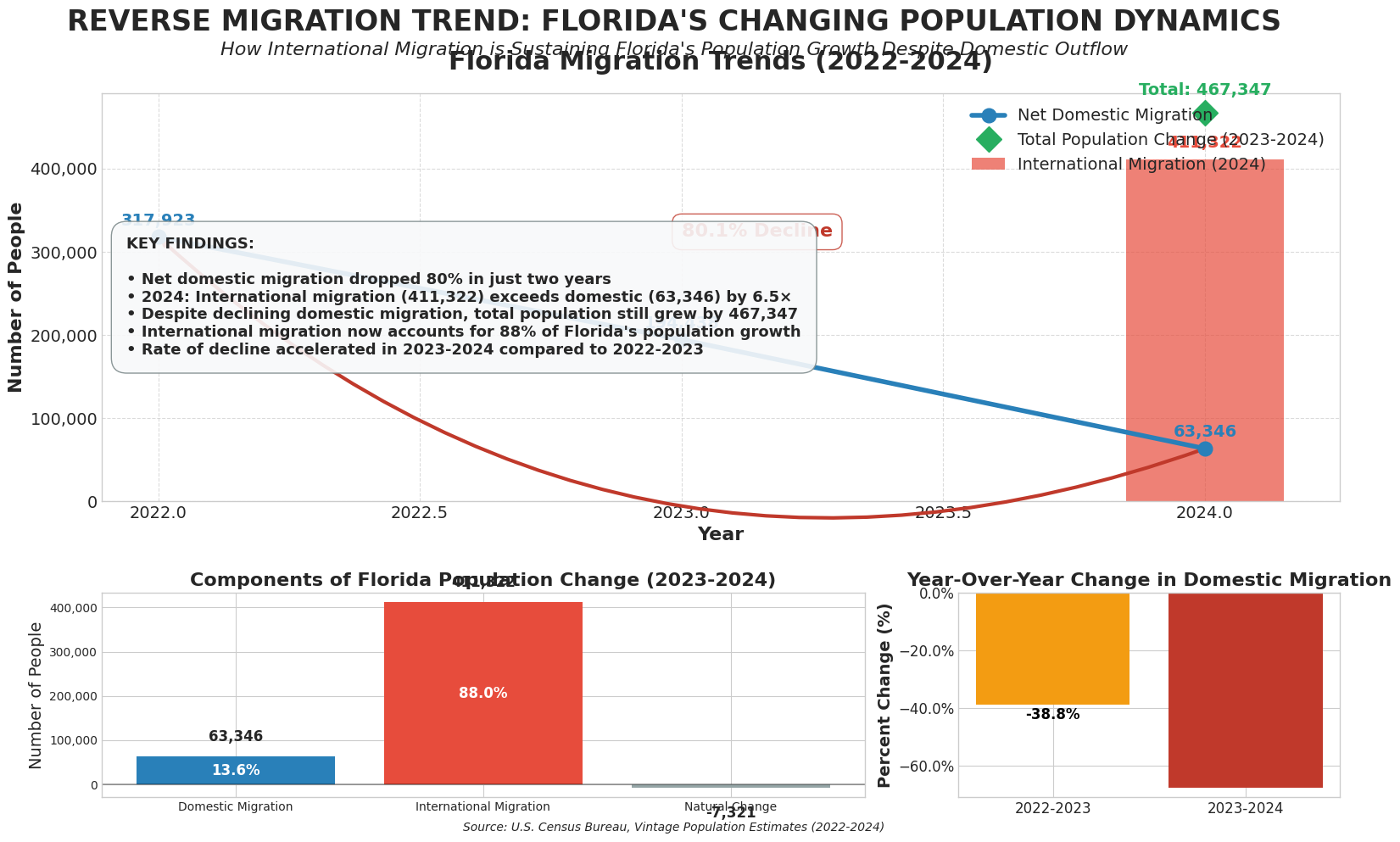Executive Summary
Key Findings
- Net domestic migration collapsed from 317,923 (2022) to 63,346 (2024)
- Record 510,925 people left Florida in 2023 - highest since Great Recession
- International migration (411,322) now sustains 88% of population growth
- Young professionals (age 32 average) leading the exodus
Primary Drivers
- Insurance crisis: Premiums rose 72% in 5 years
- Housing affordability crisis in major metros
- Limited career opportunities for young professionals
- Climate change concerns and hurricane risks
Migration Trends Analysis

2022 Baseline
317,923
Net domestic migrants
2023 Decline
194,438
38.8% decrease
2024 Collapse
63,346
67.4% further decline
Economic Driving Forces
Insurance Crisis Impact
Florida Average
$5,376
Annual premium for $300K dwelling
National Average
$1,200
4.5x lower than Florida
Mortgage Impact
20%
Insurance as % of mortgage payment
Sunbelt Housing Market Decline (2024)
Who's Leaving & Where They're Going
Age Demographics
25% of those leaving are between ages 20-29, with average departure age of 32
Top Destination States
Georgia and Texas receive the most Florida expatriates, drawn by lower costs
Climate Change & Disaster Costs
2024 Climate Disasters
Total Economic Loss
$183 Billion
27 disasters with $1B+ losses each
Human Cost
568
Deaths from climate disasters
Historical Average
9
Annual disasters (1980-2024)
Future Projections & Implications
Climate Migration Forecast
-
55 Million AmericansWill relocate due to climate by 2055
-
5.2 Million in 2025Expected climate migrants this year
-
$1.47 Trillion LossProjected real estate value decrease
Policy Implications
Workforce Retention
Need for affordable housing and career development programs
Insurance Reform
Regulatory intervention needed to address crisis
Climate Adaptation
Infrastructure investment for resilience
Economic Diversification
Reduce dependence on population growth model
Sources & Methodology
Primary Data Sources
- U.S. Census Bureau Vintage Population Estimates
- Diversified Trust Migration Analysis
- Florida Chamber of Commerce Migration Report
- Federal Reserve Bank of San Francisco Research
- First Street Climate Risk Analysis
Research Methodology
- Cross-referenced multiple authoritative sources
- Analyzed 3-year trend data (2022-2024)
- Validated statistics across multiple publications
- Included demographic and economic breakdowns
- Incorporated climate and insurance data
Last Updated: January 2025 | Analysis by: Migration Research Team | Contact: [email protected]
Take Action on These Insights
This analysis reveals critical trends affecting millions of Americans and trillions in economic value.
Policymakers
Address housing and insurance crises
Investors
Reassess real estate strategies
Residents
Plan for changing conditions